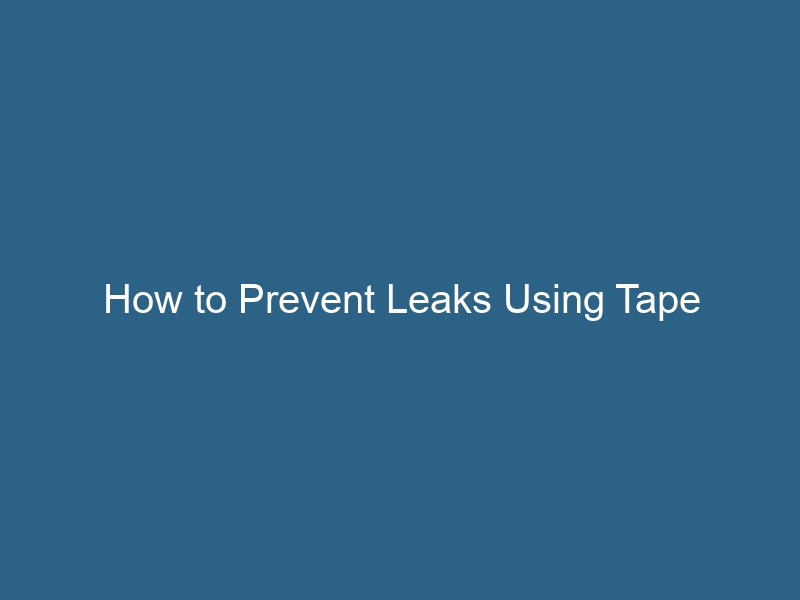Quck answer
Tape can be an effective solution for stopping leaks in various situations. Here are some tips on how to stop leaks with tape:
1. Identify the source of the leak and ensure that the area is clean and dry.
2. Choose the right type of tape for the job. For small leaks in pipes or hoses, waterproof or duct tape can work well. For larger leaks, consider using a specialized leak-sealing tape or a self-fusing silicone tape.
3. Cut a piece of tape that is slightly longer than the area to be covered.
4. Apply the tape tightly and evenly over the leak, ensuring that it adheres well to the surface.
5. Smooth out any wrinkles or air bubbles in the tape to create a tight seal.
6. Press firmly on the tape to ensure proper adhesion.
7. Monitor the repaired area to ensure that the leak has stopped and there are no signs of further damage.
Remember that tape is a temporary solution and may not provide a permanent fix for leaks. It is always best to consult a professional plumber for a long-term solution.
In many households, leaky pipes are a common issue that needs immediate attention to avoid further complications. Depending on the severity and cause of the leak, it is possible to use tape as a temporary fix.
Recommended Tape for Sealing Water Leaks
Two types of tape can be used to seal water leaks in pipes: plumber’s tape and self-fusing silicone tape.
Plumber’s tape, also known as Teflon or pipe thread tape, is ideal for sealing joints in leaky pipes. This tape creates a tight seal to prevent leaks and also acts as a lubricant, making it easier to assemble and disassemble pipes. Unlike adhesive tapes, plumber’s tape does not have a sticky surface but instead clings to the pipe when tightly wrapped around it. It can be used on pipes made of steel, plastic, PVC, and copper. Depending on the severity of the leak, plumber’s tape can provide a more long-lasting solution.
Self-fusing silicone tape, also referred to as silicone tape, is best used as a temporary fix for leaks in the middle of a pipe, often known as fracture leaks. This tape is self-adhesive and should be wrapped multiple times around the pipe to ensure proper sealing while a more permanent solution is sought.
Tip
If you do not have plumber’s tape or self-fusing silicone tape available, plumber’s putty can also be used to fix leaky pipes.
How to Use Plumber’s Tape to Fix a Leaky Pipe
If you notice a leak in the joint of a pipe, follow these steps to fix it using plumber’s tape:
- Turn off the water supply connected to the pipe.
- Unscrew the pipe from the leaking joint.
- Remove any old seal and ensure the area where the tape will be applied is completely dry for proper adhesion.
- Begin wrapping the plumber’s tape around the leak in the joint. Make sure to wrap it at least four times to ensure full coverage and a secure grip on the pipe.
- Reconnect the pipe and joint, then turn the water back on to check for any remaining leaks.
How to Use Self-Fusing Silicone Tape to Fix a Leaky Pipe
Unlike plumber’s tape, self-fusing silicone tape is meant as a temporary solution rather than a long-term fix for low-pressure leaks. It is easy to wrap around the pipe with minimal disassembly required.
- Turn off the water source for the pipe.
- Dry off any water on the pipe until it is completely dry.
- Tightly wrap the self-fusing silicone tape around the pipe, ensuring it adheres to itself. Stretch and overlap the tape to ensure a secure seal.
- Turn the water back on and run it to check for any remaining leaks.
Warning
Using silicone tape to fix a leak is only a temporary solution. Consult a professional or take permanent measures to prevent the leak from recurring.


